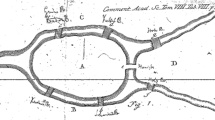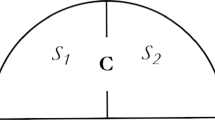Abstract
I begin by examining the question of the quantum limits of knowledge by briefly presenting the constraints of the theory that derive from its mathematical structure (in particular the no-go theorems formulated by von Neumann and Kochen and Specker). I then argue that these theorems reflect on a formal level those practical and experimental settings that are needed to come to know the properties of physical systems. In particular, I discuss some aspects of this relationist and contextualist conception of reality by comparing, in their apparent diversity, Bohr’s holistic, and Rovelli’s relationist interpretation of the formalism, that deep down share a unifying metaphysics of dispositions and propensities. Both interpretations are based on the widely shared fact that quantum mechanics does not describe previously definite quantities. In the final part, I show that, as a consequence of a relationist and perspectival approach to quantum mechanics, the quantum state of the universe regarded as an isolated system cannot be known in principle, so that the universe must be described “from within” by dividing it into two arbitrary parts. This is in fact the only way in which the two systems can exchange information by being physically correlated.
Similar content being viewed by others
Notes
We do not know, we will never know.
“We must know, we will know” is the motto written on Hilbert’s tomb.
We should keep in mind that the so-called Copenhagen interpretation has been authoritatively regarded as an historical myth (Howard [25]).
There are subtleties about the difference between relational and extrinsic properties that need detail us (see Marshall and Weatherson [36])
The hypothesis that Bohr defended the disturbance view according to which the quantum system has a previous definite value which is unknowable, because its state is disturbed by the measurement has been attacked by Bohm (1951), Folse (1985), Faye [16], Whitaker (2004).
Dorato [12] discusses this difficulty in more details.
It is more controversial whether in general relativity all kind of motion is relative: Malament [35] proved a theorem in which rotation has to be considered an intrinsic property of the rotating object.
Nevertheless, philosophers also talk about irreducible elements that provide identity to objects (haecceitates) independently of their properties.
For an overview of the rich literature on ontic structural realism, see French [19].
Interestingly, in Rovelli’ interpretation, this non-extendibility is forbidden not just for relativistic reasons. Stress on the discontinuous character of Rovelli’s ontology is defended in Laudisa and Rovelli [29].
For this view, see Smolin [42].
References
Allori, V., Zanghì, N.: Un viaggio nel mondo quantistico. In: Allori, V., Laudisa, F., Zanghì, (eds.) La natura delle cose, pp. 229–390. Carocci, Roma (2006)
Bacciagaluppi, G., Valentini, A.: Quantum theory at the crossroad. Cambridge University Press, Cambridge (2009)
Beller, M., Fine, A.: Bohr’s response to EPR. In: Faye, J., Folse, H. (eds.) Niels Bohr and Contemporary Philosophy: Boston Studies in the Philosophy of Science, vol. 153, pp. 1–31. Springer, Berlin (1994)
Bohr, N.: The quantum postulate and the recent development of atomic theory. Nature 121, 1928 (1928)
Bohr, N.: Can quantum mechanics descriptions of physical reality be considered complete? Phys. Rev. 702, 48–696 (1935)
Bohr, N.: Discussion with Einstein on epistemological problems in atomic physics. In: P.A. Schilpp (Ed) Albert Einstein: Philosopher-Scientist , pp. 200–41. Evanston: The Library of Living Philosophers, Reprinted in N. Bohr. 1958. Atomic Physics and Human Knowledge, pp. 32–66 (1949)
Brown, M.: Relational quantum mechanics and the determinacy problem. Br. J. Philos. Sci. 6, 679–695 (2009)
Clifton, R., Pagonis, C.: Unremarkable contextualism: dispositions in the Bohm theory. Found. Phys. 2(1995), 283 (1995)
Cushing, J.: Quantum Mechanics: Historical Contingency and the Copenhagen Hegemony. Chicago University Press, Chicago] (1994)
Dorato, M.: Dispositions, relational properties and the quantum world. In: Kistler, M., Gnassonou, B. (eds.) Dispositions and Causal Powers, pp. 249–270. Ashgate, Oldercroft (2007)
Dorato, M.: Rovelli’s relational quantum mechanics, anti-monism, and quantum becoming. In: Marmodoro, A., Yates, D. (eds.) The Metaphysics of Relations, pp. 235–262. Oxford University Press, Oxford (2016). https://doi.org/10.1093/acprof:oso/9780198735878.003.0014
Dorato, M.: Bohr’s Relational Holism and the classical-quantum Interaction. In: Folse, H., Faye, J. (eds.) Niels Bohr and Philosophy of Physics: Twenty First Century Perspectives, Bloomsbury Publishing, London, pp. 133–154 (2017)
Everett, H.: The Theory of the Universal Wave Function. First printed in DeWitt and Graham (1973), 3–140. Reprinted as cited here in Barrett and Byrne 2012, 72–172 (1956)
Everett, H.: Relative state formulation of quantum mechanics. In: Barrett, J., Byrne, P. (eds.) The Everett Interpretation of Quantum Mechanics: Collected Works 1955–1980 with Commentary. Princeton University Press, Princeton (1957)
Bell, J.S.: On the problem of hidden variables in quantum mechanics. Rev. Mod. Phys. 38, 447–52 (1966)
Faye, J.: Niels Bohr: His Heritage and Legacy. An Antirealist View of Quantum Mechanics. Kluwer Academic Publisher, Dordrecht (1991)
Faye, J.: Non-locality or non-separability? A defense of Bohr’s anti-realist approach to quantum mechanics. In: Faye, J., Folse, H. (eds.) Niels Bohr and Contemporary Philosophy, pp. 97–118. Bloomsbury Academic, London (1994)
Forman, P.: Kausalität, Anschaulichkeit, and Individualität, or How Cultural Values Prescribed the Character and Lessons Ascribed to Quantum Mechanics. In: Nico, S., Volker, M. (eds.) Society and knowledge, Transaction Books, pp 333–347 (1984)
French, S.: The Structure of the World, Metaphysics and Representation. OUP, Oxford (2014)
Ghirardi G.C.: Sneaking a Look at God’s Cards. Princeton University Press, Princeton, transl. from Un’occhiata alle carte di Dio, Milano 1981 (1985)
Gillies, D.: Philosophical Theories of Probability. Routledge, London (2000)
Goldstein, S.: “Bohmian Mechanics”, The Stanford Encyclopedia of Philosophy (Summer 2017 Edition). In: Edward N. Z. (ed.). https://plato.stanford.edu/archives/sum2017/entries/qm-bohm/
Hawking, S.: Is the end in sight for theoretical physics? Phys. Bull. 32(1), 15–17 (1981)
Howard, D.: What Makes a Classical Concept Classical? Toward a Reconstruction of Niels Bohr’s Philosophy of Physics. In: Faye, J., Folse, H. (eds.), Niels Bohr and Contemporary Philosophy: Boston Studies in the Philosophy of Science, vol. 158, pp. 201–229. Kluwer Academic, Dordrecht (1994)
Howard, D.: Who invented the “Copenhagen Interpretation?” A study in mythology”. Philos. Sci. 71, 669–682 (2004)
Hughes, R.: The Structure and Interpretation of Quantum Mechanics. Harvard University Press, Harvard (1989)
Isham, C.: Lectures on Quantum Theory. Imperial College Press, London (1995)
Kochen, S., Specker, E.: The problem of hidden variables in quantum mechanics. J. Math. Mech. 17, 59–87 (1967)
Laudisa, F., Rovelli C.: Relational quantum mechanics. In: Edward N. Z. (ed.), The Stanford Encyclopedia of Philosophy (Winter 2019 Edition), forthcoming. https://plato.stanford.edu/archives/win2019/entries/qm-relational/
Laudisa, F.: Against the no-go philosophy of quantum mechanics. Eur. J. Philos. Sci. 4, 1–17 (2014)
Laudisa, F.: Open problems in relational quantum mechanics. J. Gen. Philos. Sci. 50(2), 215–230 (2019). https://doi.org/10.1007/s10838-019-09450-0
Laudisa, F.: La realtà al tempo dei quanti. Bollati Boringhieri, Torino (2019)
Lewis, D.: Extrinsic properties. Philos. Stud. 44, 197–200 (1983)
Lewis, P.: Quantum Ontology. OUP, Oxford (2016)
Malament, D.: A No-Go Theorem about Rotation in General Relativity. In: Malament, D. (ed.) Festschrift for Howard Stein. Open Court Press, Chicago (2000)
Marshall, D., Weatherson, B.: Intrinsic vs. Extrinsic Properties. In: Edward N. Z. (ed.) The Stanford Encyclopedia of Philosophy (Spring 2018 Edition). https://plato.stanford.edu/archives/spr2018/entries/intrinsic-extrinsic/ (2018)
Minkowski, H.: Space and time. In: Einstein et al. The Principle of Relativity, Dover, pp. 75–91 (1952)
Popper, K.: The Propensity Interpretation of the calculus of probability. Br. J. Philos. Sci. 10, 25–42 (1959)
Redhead, M.: Incompleteness, Nonlocality and Realism. Clarendon Press, Oxford (1987)
Rovelli, C.: Relational quantum mechanics. Int. J. Theor. Phys. 35, 1637 (1996)
Rovelli, C.: arXiv:quant-ph/9609002v2 (1998)
Smolin, L.: The dynamics of difference. arXiv:1712.04799v3 [gr-qc] (2019)
von Neumann, J.: (1955) Mathematical Foundations of Quantum Mechanics. Princeton University Press, Princeton (original edition) (1932)
Whitaker, A.: Einstein Born and the Quantum Dilemma. Cambridge University Press, Cambridge (1989)
Zinkernagel, H.: Niels Bohr on the wave function and the classical/quantum divide. Stud. History Philos. Mod. Phys. 53, 9–19 (2016)
Author information
Authors and Affiliations
Corresponding author
Ethics declarations
Conflict of interest
The corresponding author states that there is no conflict of interest.
Additional information
Publisher's Note
Springer Nature remains neutral with regard to jurisdictional claims in published maps and institutional affiliations.
Rights and permissions
About this article
Cite this article
Dorato, M. Bohr meets Rovelli: a dispositionalist account of the quantum limits of knowledge. Quantum Stud.: Math. Found. 7, 233–245 (2020). https://doi.org/10.1007/s40509-020-00220-y
Received:
Accepted:
Published:
Issue Date:
DOI: https://doi.org/10.1007/s40509-020-00220-y




